Morocco – the name instantly conjures up images of vibrant souks or market places, intoxicating spices, mint tea, and leisurely camel rides amid the magnificent sand dunes of the Sahara. But if you truly want to experience the country’s culture and traditions at its authentic and rustic best on your Morocco trip, look no further than a sojourn through its High Atlas Mountains, home to some of North Africa’s most remote and ancient villages and populations.
Berber Origins
Known among the locals as ‘Idraren Draren’ (Mountains of Mountains), the High Atlas Mountains are North Africa’s highest mountain range. They run across Morocco for about 1000 km and separate the mild Atlantic and Mediterranean coastlines from the harsh Sahara desert in the south.
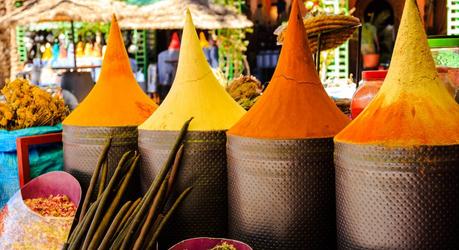
These ancient ranges were formed several millions of years ago when the landmasses of Europe and Africa collided. With an elevation of 4,167 m, Toubkal in southwestern Morocco is the range’s highest peak. The mountains are home to arid desert landscapes dotted with burnt-orange rock, pines, cedars, snow-capped peaks and lush green valleys, often interspersed with the clay homes of the nomadic Berber population.
The Berbers are the original inhabitants of these ranges – they proudly call themselves Amazigh ( “free people” or “noble men) and have a history as an indigenous people in western North Africa that goes back at least to 10,000 BC. And since then, they have been defying the often inhospitable conditions to live among the mountains – while some continue to reside in clay huts and caves like their ancestors, others live in the small hamlets in the valleys – all the while remaining staunchly loyal to their traditions and nomadic way of life.
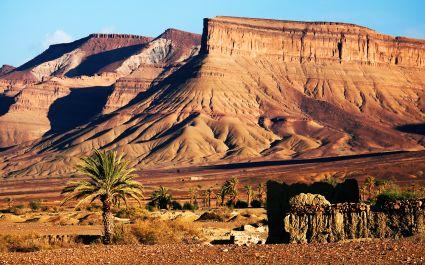
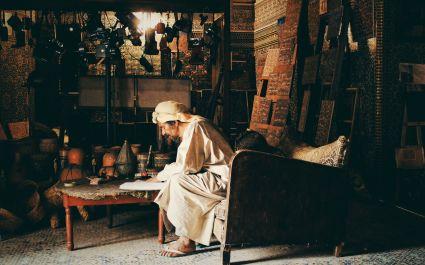
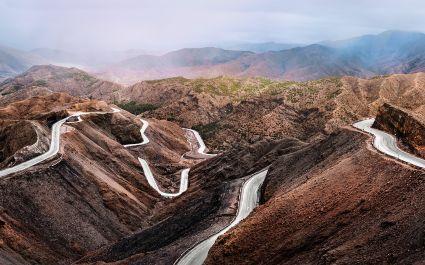
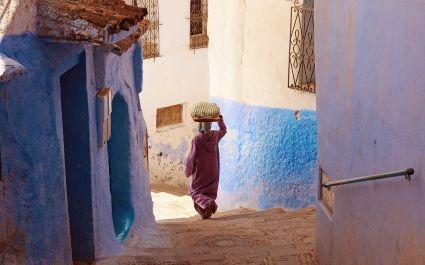
The Berbers have resolutely preserved their culture through oral storytelling and song. And their traditional belief systems have become an inextricable part of their lives. As you amble through villages, you will hear strains of the rhythmic beat of drums and flutes wafting through, to which the villagers dance to, in celebration and ritual.
Another deeply ingrained tradition is that of weaving carpets. Berber women have been weaving rugs for centuries and it’s little wonder then that Morocco produces some of the world’s best carpets. Natural plant dyes are used to express distinctive simple geometric designs. These are often a visual representation of the many stories passed from one generation to the next. They are also skilled at making babouches (slippers), kaftans (tunics) and silver jewelry. Traditionally, the Berber men were merchants, who would transport these goods through the great mountains and valleys to North Morocco, but today their nomadic lifestyle focuses on livestock farming, drawing from their expertise at taming ungulates such as camels, horses and donkeys.
Rustic Experiences
One of the best ways to truly experience, immerse and savor this ancient and unique culture during your Morocco trip is to stay in the several eco-friendly lodges that have sprung up in the area. One of the earliest to come up was the Kasbah du Toubkal, set up by two British brothers, which is a true celebration of Berber culture and hospitality. The hilltop walled fortress may appear a formidable sight, set against the backdrop of North Africa’s highest peak, but it has a throbbing heart. Formerly the summer home of a local feudal chief, the kasbah, (citadel) was a crumbling ruin until the mid-1990s. The lodge was built by hand – every stone carried by the villagers or on the backs of mules, to create this global, award-winning, sustainable property. The restoration created not only one of the finest lodges in the world but also gave birth to a warm relationship with the mountain-dwelling community – they not only make up the workforce of the Kasbah, but also receive funds specifically for their community to prosper – whether it is it to purchase an ambulance or support the education of their children.

Hospitality, so intrinsic to the Berbers, is steeped in every brick of the lodge. As the staff greets you with the iconic Moroccan tea, they sweeten it with stories of their family life. Look out on the terrace and be greeted with the warm smile of a local woman, busy baking the bread that you will eat during your meals. Walk along the mountains trails through the villages and you will be welcomed into the humble homes of several generous Berber families, where you can tuck into a delicious, traditional lunch.
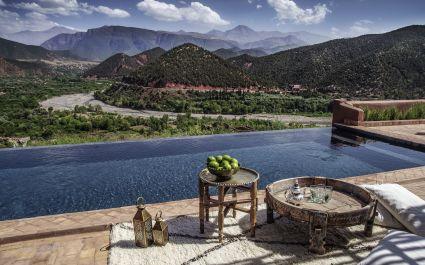

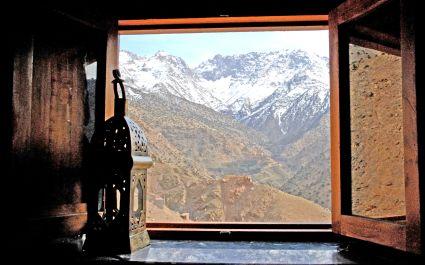
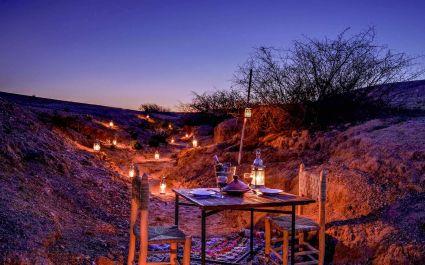
Staying at the Kasbah du Toubkal during your Morocco trip will also allow you to experience the scenic beauty of the High Atlas in totality. Savor the abounding and ever-changing views as the sun glides over the mountain range, while you relax in the cozy, natural furnishings – including bewitching log fires to keep you warm at night. As you feast on a tagine, a staple food of the region that comes served in an earthenware pot with aromatic couscous, you might never want to leave. Equally enticing are the several trekking and hiking trails that will encourage you to explore and feel the crisp mountain air on your face. Along the way, your mountain guide can teach you about the rich array of native plants that grow in the area and are used for preparing herbal remedies. You can also experience the relaxation rituals of a typical Moroccan hammam (steam bath).
And when you embark on your mule for that one final ride back to town at the end of your Morocco trip, you may be leaving the physical confines of your nomadic lifestyle behind, but rest assured, its unfettered spirit will be yours to cherish for a lifetime.
Let us craft your vacation in the exquisite mountains of Morocco!
Click Here